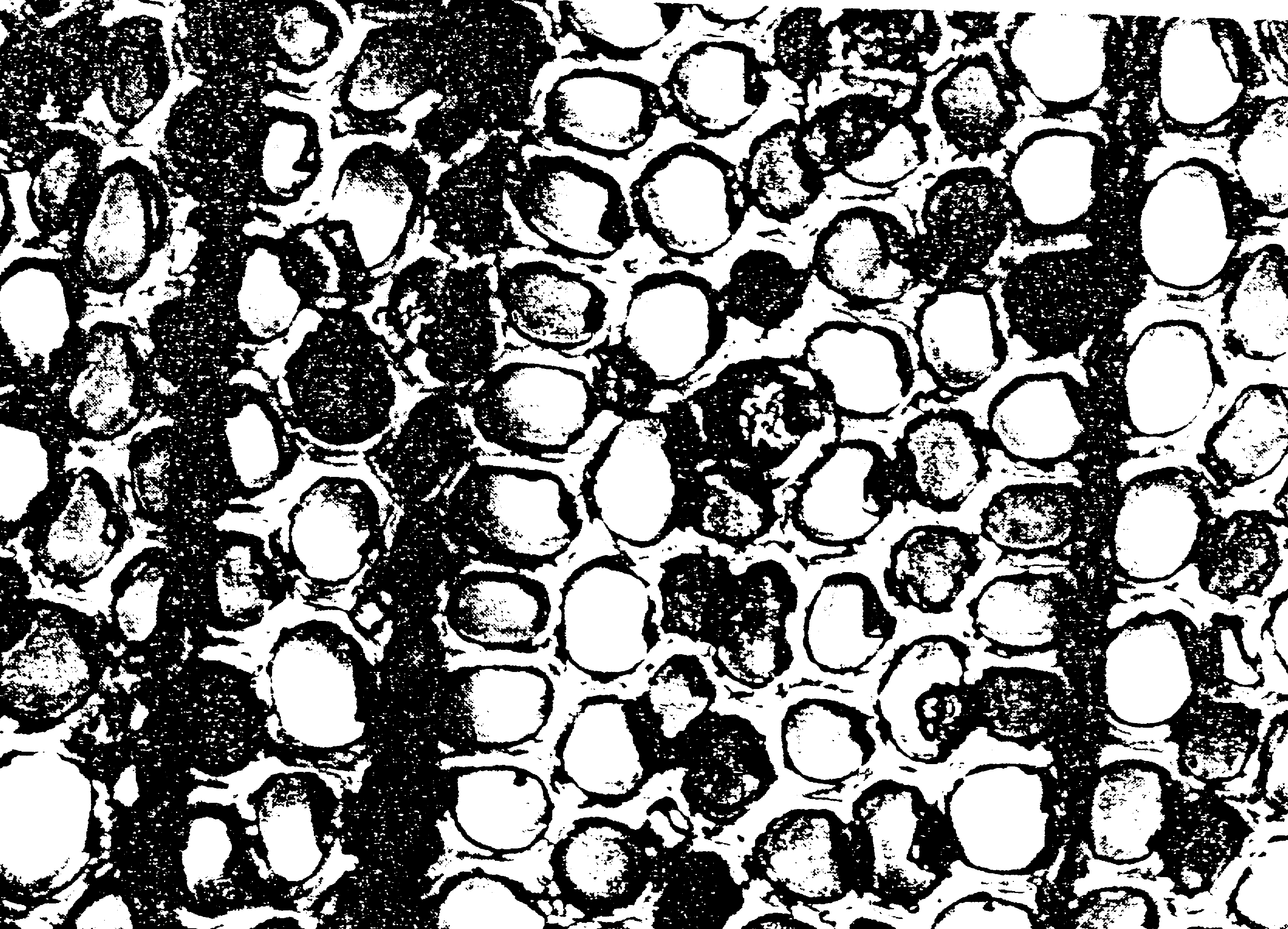

Several
varieties of wood have been treated with a variety of monomers such that
the wood is swollen with the monomer mixture and then polymerized in-situ
to form wood-polymer composites (WPC).
Styrene has been a monomer of choice for forming WPCs and it has been clearly
shown that the monomer is readily taken up by the wood sample as shown
below.
 |
 |
| Polarized light micrograph of a cross section of caxieta. The cell lumen are the light colored regions outside of the cells. | Here it can clearly be seen that the caxieta lumen is filled with polystyrene after impregnation and cure of styrene. Note that only the lumen is filled with polymer. |
In
this case a variety of pine and caxieta has been succesfully inundated
with styrene and upon polymerization these material's physical properties
such as tensile strength, and dimensional stability. Dimensional
stabilities were improved. Also the mechanical properties were shown
to improve.
The
problem with this particular system is that the specific properties did
not improve and these types of systems show little to no interactions between
the cellulose of the cell walls and the polymer introduced. In fact
it was shown that the polymer can almost be completely extracted from the
wood matrix which is indicative of weak interactions.
To see an example of WPCs with strong interactions of the wood and polymer
click here.